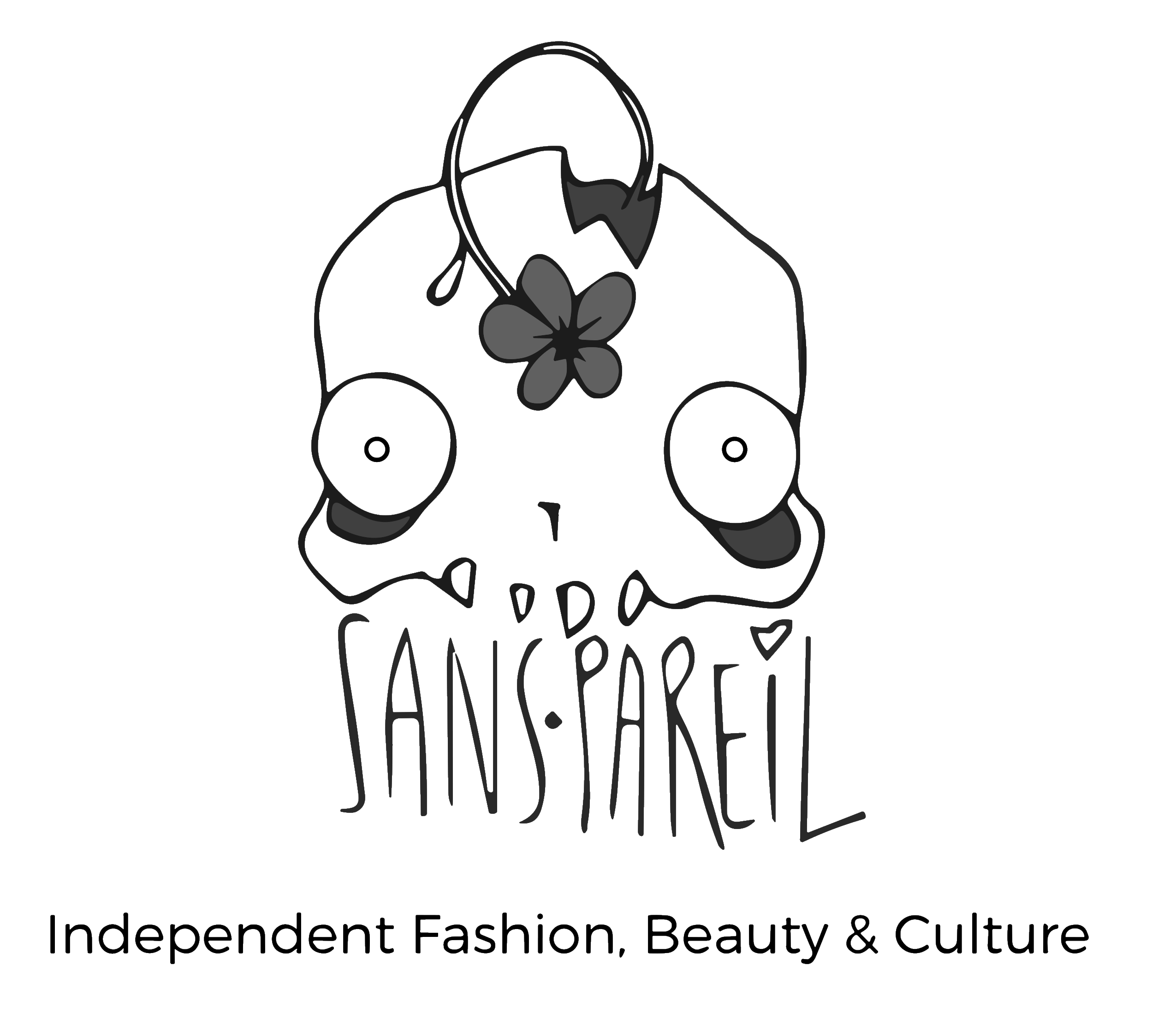From journalist and vintage fashion aficionado Charlotte Dallison comes How To Be Fabulous, a gorgeously-illustrated celebration of second-hand style for climate conscious and budget savvy fashion
lovers. As the cost of living rises and fast fashion’s devastating impact on the environment, Charlotte shows us that treading lightly doesn’t mean giving up a fabulous sense of personal style.
We cannot wait to read this absolute gem!
You can also win yourself a copy - head over to our Instagram or facebook page to enter.
To celebrate the release of her book, Charlotte has kindly gifted Sans Pareil Online readers with an exclusive chapter;

Common Questions About Vintage:
As someone who has been immersed in the world of vintage from a young age, I have learnt the tricks of the trade organically; but if you are coming into this world anew, it can likely seem quite overwhelming. As you read on you’ll see that I’ve done my best to answer some frequently asked questions my less experienced peers and podcast listeners tend to ask me about vintage clothes. Remember that all that’s written in this book is a tool, not a rule – you can approach your style journey however you please – but when shopping second-hand clothes it pays to have a bit of base knowledge under your (vintage) belt before going forth and beginning to purchase.
What exactly is vintage?
A vintage item of clothing is a (usually preloved) piece that was originally manufactured between 30 and 100 years ago. Anything older than that is antique; anything newer is second-hand. Simple! That said I am not at all snobby about this rule; I see any form of second-hand clothing acquisition as a fabulous step forward. As such, throughout this book I use the terms ‘vintage’, ‘second-hand’ and ‘preloved’ interchangeably.
Do I have to wear vintage exactly as it was worn when it was originally made?
Absolutely not. The world of vintage is seemingly full of rules, but do remember that rules were made to be broken! A lot of people in the vintage community are terribly strict about
how certain items must be put together. While it’s wonderful to broaden your mind and educate yourself on a design’s original context, modern-day vintage wearing is all about mixing it up. My own style leans towards the late 1950s to early 1960s, to suit my hourglass figure (more on that in Chapter 5) and penchant for wiggle dresses. But I have no real rules for myself when it comes
to various eras. In fact some of my favourite vintage finds originate from the 1920s and 1980s respectively, despite clothing from those eras being very different to what was made during the midcentury period I’m most drawn to. I mix those other pieces into my outfits without any thought as to whether the periods ‘clash’, purely because the items look fantastic together!
You can combine your preferred eras into whichever clothing combinations make your heart soar. Here are some mixes I adore: the complementary combo of a 1930s flowy gown and 1970s florals; the structured styles of the early 1960s mixed with the boxy minimalism of the early 1990s; and the practical styles of the
1940s mixed with 1980s oversized outerwear.
I wear a lot of second-hand clothing and accessories from more recent times, too – especially shoes. After all I’m a modern girl with a size 39.5 foot; the spindly 1960s stilettos I’m so drawn to just don’t work with the body I’ve been blessed with as they’re almost always too small. I give them a pass and head to eBay or consignment stores instead, often coming across second-hand designer shoes
for a song. (We’ll get to the shopping bit soon, in Part 3.)
Keep in mind that vintage clothing and accessories might have different modes of being worn today versus in their original era. Be mindful of things you mightn’t be used to, such as clip-on earrings, wind-up watches or stockings that require a garter belt. Personally I don’t mind doing things the old-fashioned way, but if you would rather contemporary conveniences opt for more modern versions of past designs.
Do not feel that once you embrace vintage clothing you must make your hair and face follow suit. Beauty must be an authentic expression of you and shouldn’t be dictated to by the beauty rules of yesteryear. That said, if you are becoming increasingly inspired by a certain era there are often hair and make-up looks to match. Many big cities house vintage-style salons, and YouTube offers an abundance of how-to guides. YouTube star Lisa Eldridge’s channel is a particularly good place to start, where she showcases modern takes on all kinds of vintage make-up looks.

Pictured: Charlotte Dallison.
What is deadstock?
Vintage is usually preloved – but there is an exception. The term may sound morbid, but deadstock actually signifies a vintage holy grail. A deadstock item is an original piece from the past that never sold at the time it was first for sale – which means it’s usually still in perfect condition. Yes, deadstock is rare to come by, but pieces do pop up now and then.
My best deadstock score was an original 1960s bullet bra-meets-girdle (complete with gorgeous garters hanging off it ready for a set of stockings) found in a vintage shop in Lisbon, Portugal. I wore the heavenly vintage lingerie set beneath my fit and flare dress on my flight back to London (after giving it a good handwash in my Airbnb bathroom). At airport security the hardware on the garter belt set off the metal detector! In the end I was obliged to quickly flash the security guards to prove I was porting a style statement rather than a weapon. It’s safe to say nostalgic knickers made their day, and nowadays I do my best to wear simpler undergarments for international travel.
Is vintage shopping expensive?
It’s a proper Wild West when searching for decent preloved clothes. Depending on the avenue you take and your level of luck on any given shopping day, you might spend five minutes sourcing a $500 piece followed by ten hours hunting for something that only costs you $10! Time can equate to money when it comes to shopping second-hand, yet, in the same breath, it’s also down to destiny.
A lot of long-time vintage wearers say that shopping second-hand used to be cheaper; but I can assure you there are still many gems out there to collect with ease, plus you’ll part with a lot less cash than you would financing new pieces. All you need to know is where to go; and that, of course, is where this book comes in.
There are plenty of factors that play a part in the cost of vintage wears. Shop owners now have modern overheads to keep up with: inner-city rents, digital subscriptions, staff salaries and so on. It all adds up and contributes to the price you’ll pay for any given piece. The increasing popularity of vintage also means the market is increasing in value – so there’s no time like the present to begin to embrace it.
This book will empower you to source great vintage clothes yourself, giving you options beyond shopping at the more pricey vintage boutiques.
Did someone die in this?
This is a question I was often asked by customers when I ran my vintage business. My answer was always the same: darling, nobody was donning your 1960s party frock on their death bed. Trust me. (Although I do personally plan to go out in a vintage ensemble fit for a soirée!)
So, let’s reframe vintage. It’s delicious, not deceased. By wearing vintage pieces you’re giving them a new life rather than prolonging their death. And if you believe that fibres can hold onto energy, think again next time you buy something made in the shocking conditions of a fast-fashion factory – now that’s bad juju.
From now on, think of the scent of vintage in the same way as the evocative aroma of opening an old book. Know that the slight scent of mothballs, or any other residue, can be removed by a trusted dry-cleaner or a quick handwash. (I’ll share my tips on cleaning vintage in Chapter 4.)
Should I buy online or in person?
That is entirely up to you. In Part 3 of this book I share advice on purchasing vintage online, as well as how best to navigate boutiques, op shops and vintage markets. Armed with all of this knowledge you will be able to make your own choice. As for me, I combine it all! I love finding something fabulous in the depths of eBay as much as I love hunting through a flea market or visiting a beautiful boutique.
The takeaway
The world of vintage, and fashion at that, is shrouded in rules. Never feel dictated to when taking in any kind of vintage guide but, remember, a good way to empower yourself before you begin your vintage style journey is to learn a few of the basic rules first.
RRP $40.00 NZD. Release date 28th November, 2023. Published by Affirm Press, © Charlotte Dallison, 2023. Can pre-order on Booktopia now in AU and MightyApe in NZ.

